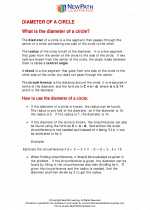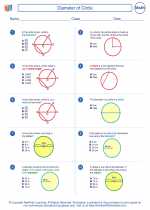Types of Functions
Functions are mathematical relationships that assign each input value to exactly one output value. There are several types of functions, each with its own characteristics and properties. Understanding these types of functions is fundamental in mathematics and can be helpful in solving various problems.
1. Linear Functions
A linear function is a function that can be represented by a straight line when plotted on a graph. It has the form y = mx + b, where m is the slope of the line and b is the y-intercept. The graph of a linear function is a straight line.
Example:
Consider the function y = 2x + 3. This is a linear function with a slope of 2 and a y-intercept of 3.
2. Quadratic Functions
A quadratic function is a function that can be represented by a parabola when plotted on a graph. It has the form y = ax^2 + bx + c, where a, b, and c are constants and a is not equal to 0. The graph of a quadratic function is a U-shaped curve called a parabola.
Example:
Consider the function y = x^2 - 4x + 4. This is a quadratic function, and its graph is a parabola opening upwards.
3. Exponential Functions
An exponential function is a function where the variable is in the exponent. It has the form y = a * b^x, where a and b are constants and b is the base of the exponent. The graph of an exponential function is a curve that either increases or decreases rapidly.
Example:
Consider the function y = 3 * 2^x. This is an exponential function, and its graph increases rapidly as x increases.
4. Absolute Value Functions
An absolute value function is a function that contains an algebraic expression within absolute value symbols. It has the form y = |ax + b| + c, where a, b, and c are constants. The graph of an absolute value function is a V-shaped graph.
Example:
Consider the function y = |2x - 3| + 1. This is an absolute value function, and its graph is a V-shaped graph with the vertex at (3, 1).
5. Rational Functions
A rational function is a function that can be expressed as the ratio of two polynomial functions. It has the form y = f(x) / g(x), where f(x) and g(x) are polynomial functions and g(x) is not equal to 0. The graph of a rational function can have horizontal or vertical asymptotes.
Example:
Consider the function y = (2x + 1) / (x - 3). This is a rational function, and its graph may have horizontal or vertical asymptotes depending on the values of f(x) and g(x).
6. Piecewise Functions
A piecewise function is a function that is defined by multiple sub-functions, each applying to a certain interval of the main function's domain. It has the form y = { f1(x) if x < a, f2(x) if a ≤ x < b, f3(x) if x ≥ b }, where f1(x), f2(x), and f3(x) are individual functions. The graph of a piecewise function consists of different segments with distinct characteristics.
Example:
Consider the function y = { 2x if x < 0, x^2 if x ≥ 0 }. This is a piecewise function, and its graph consists of a line for x < 0 and a parabola for x ≥ 0.
Summary
Understanding the different types of functions is crucial in mathematics as it allows for the analysis and interpretation of various relationships and phenomena. Each type of function has its own unique properties and behavior, and being able to identify and work with these functions is an essential skill for any math student.
Make sure to practice graphing these functions and solving problems involving each type to solidify your understanding.
.◂Math Worksheets and Study Guides Sixth Grade. Diameter of Circle

 Worksheet/Answer key
Worksheet/Answer key
 Worksheet/Answer key
Worksheet/Answer key
 Worksheet/Answer key
Worksheet/Answer key
